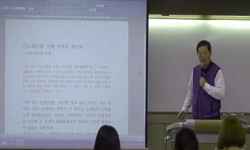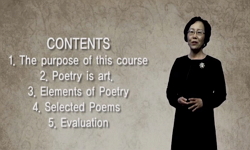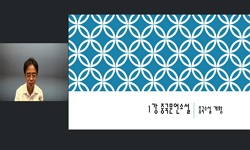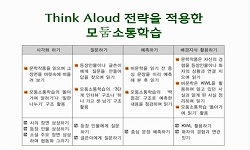전기소설은 우리나라 서사 문학의 역사적 발전 과정 중에서 소설의 성립기와 관련이 깊은 장르이다. 전기소설의 대표작인 「금오신화」는 고등학교 문학 교과서 18종 중 14종에 <이생규장...
http://chineseinput.net/에서 pinyin(병음)방식으로 중국어를 변환할 수 있습니다.
변환된 중국어를 복사하여 사용하시면 됩니다.
- 中文 을 입력하시려면 zhongwen을 입력하시고 space를누르시면됩니다.
- 北京 을 입력하시려면 beijing을 입력하시고 space를 누르시면 됩니다.
https://www.riss.kr/link?id=T10433764
- 저자
-
발행사항
대구 : 계명대학교, 2005
-
학위논문사항
학위논문(석사)-- 계명대학교 교육대학원 : 국어교육전공 2005.2
-
발행연도
2005
-
작성언어
한국어
- 주제어
-
발행국(도시)
대구
-
형태사항
98 p. ; 26cm
- 소장기관
-
0
상세조회 -
0
다운로드
부가정보
국문 초록 (Abstract)
전기소설은 우리나라 서사 문학의 역사적 발전 과정 중에서 소설의 성립기와 관련이 깊은 장르이다.
전기소설의 대표작인 「금오신화」는 고등학교 문학 교과서 18종 중 14종에 <이생규장전>, <만복사저포기> 등이 수록되어, 그 비중이 큰 작품이라 할 수 있다. 그러나 실제 교육 현장에서 전기소설 교육은 교사 위주, 작품 위주로 행해져 학습자의 주체적인 참여가 이루어지지 못하고 있다. 따라서 본 연구는 문학 교육의 이론적 배경을 7차 교육 과정에서 적극 반영한 구성주의 이론에서 찾아, 작품 이해와 감상이 균형 있게 이루어질 수 있는 학습자 중심 교육 방안을 모색하고자 하였다.
본 연구에서는 학습자 중심 교육 방안으로서 전기소설의 환상성(fantasy)에 주목하였다. 학습자들의 설문 조사 결과, 학습자들이 판타지 소설과 게임, 영화 등 판타지 관련물을 많이 접하고 있음을 확인하였다. 전 세계 네티즌들이 열광했던 시뮬레이션 게임인 ‘스타 크래프트’와 소설과 영화로 인기를 끌었던 ‘해리포터’, ‘반지의 제왕’에서 볼 수 있듯이, 현대의 학습자들은 환상성에 많이 노출되어 있다. 이러한 환상성은 고대부터 있어 온 것으로, 현대 대중문화의 중요한 요소이다. 「금오신화」 다섯 편의 작품들은 모두 산 자와 죽은 자의 공존, 신비한 공간의 설정 등에서 환상성이 나타난다. 이러한 점에서 「금오신화」는 현대의 판타지 소설과도 같은 작품으로 볼 수 있다.
전기소설에 나타난(내재된) 환상성의 교육적 가치는 다음과 같다.
1. 환상성은 상상력과 연계된 것으로 당대 문학 향유층의 상상력의 지평을 보여준다.
2. 환상성은 삶의 문제를 탐구하는 하나의 방법적 모색이었다.
3. 학습자들은 현대에 넘쳐나는 환상성을 고전에서 찾아봄으로써 희열을 느낄 수 있다.
4. 디지털 시대에 새로운 문학 영역으로 확대될 수 있는 환상문학에 대한 이해와 감상에 도움이 된다.
5. 학습자들은 전기소설, 나아가서 고전소설, 현대소설, 판타지 소설에 나타나는 환상성이 초월적 세계를 향해 질주한다고 해서 퇴행적인 것, 리얼리티가 부족한 것으로 인식하지 않게 된다.
6. ‘환상’을 학습자가 체험함으로써 단순하고 편협적인 사고에서 벗어나 정신적 지평을 확대할 수 있다.
본고에서는 전기소설의 환상성에 주목하여 전기소설의 학습자 중심 교육 모형을 구안하였다. 이를 위해 구성주의 이론에 기초한 다음의 두 단계와 텍스트 상호성의 원리에 초점을 맞추어 <이생규장전>의 수업 단계를 설정하였다.
1단계 : 문학 작품 수용 과정의 이해 단계
2단계 : 집단 구성원과의 상호작용을 통한 의미 구성 단계
학습자들은 <이생규장전>의 학습 과정을 통해 문학 작품을 감상하는 방법과 원리를 터득하여 다른 작품들을 즐겨 읽고, 감상할 수 있는 능력을 기를 수 있게 된다.
본 연구는 전기소설의 문학 교육적 측면에서 연구를 시도하여 장르별 문학 교육 방안을 제시하였다. 또한 본 연구는 구성주의에 입각한 학습자 중심의 교육 방안으로서 환상성을 활용하여, 문학 교육 방안의 구체적, 실제적인 예를 제시하였다.
다국어 초록 (Multilingual Abstract)
The genre of Jeungi soseol(傳奇小說: Fantasy fiction) is one of literary genres substantially related with the evolution of novel in the history of Korean epic literature. Such stories as ‘Yisaenggyujangjeon’ and ‘Manboksajeopogi’ from Geu...
The genre of Jeungi soseol(傳奇小說: Fantasy fiction) is one of literary genres substantially related with the evolution of novel in the history of Korean epic literature. Such stories as ‘Yisaenggyujangjeon’ and ‘Manboksajeopogi’ from Geum-o-sinhwa, the most representative classical novel of extraordinary stories in Korea are put on 14 high school literature textbooks out of the total 18. At the moment, however, as lessons on classical novels of extraordinary stories are given centering on teachers and texts in schools, chances for learners' independent participation are few. In this context, the study seeks ways of learner-centered education where understanding keeps balance with appreciation, taking in the constructivism adopted in the 7th education curriculum as a theological background of literary education.
The study focuses on fantasy that Jeungi soseol create as a means of learner-centered education. According to learners surveys, learners have a frequent access to fantasy materials such as novels, games and movie films. As we can see in ‘Starcraft,’ a simulation game which enjoys a world-wide popularity among netizens and ‘Harry Porter’ and ‘The Lord of the Rings’ which were produced in a movie film as well as a book, learners of our time are substantially exposed to fantasy. The fantasy has come down from ancient times to be an important element in the modern popular culture. The five pieces in Geum-o-sinhwa show the establishment of elements that generate fantasy such as coexistence of the dead and the living, and mysterious space. In this regard, Geum-o-sinhwa can be regarded as the equivalent of the fantasy novels of our time.
Educational values of the fantasy in Jeungi soseol is:
1. Fantasy is related with the power of imagination and therefore, it shows the extent of the imagination of literary readers of a time.
2. Fantasy was a methodological search in an attempt to examine the matters of living.
3. Learners can joy at finding the fantasy overflowing in the modern time in classical works.
4. It is helpful to the understanding and appreciation of fantasy literature that would take root as a new literary realm in this digital era.
5. Learners would not consider it a degradation or lack of reality even if the fantasy of classical novels, modern novels and fantasy novels races off into a transcendental world.
6. Learners can extend their mental horizons deviating from a narrow mind as they experience it themselves.
The study conceives a learner-centered teaching model of classical novels of extraordinary stories focusing on their fantasies. The objectives of novel education does not lie in making learners memorize the story of a novel or let them explain what it is about, but in teaching them to learn the perceive of appreciating methods and principles so that they can have the ability to read and appreciate novels. To achieve this objective, two steps are established based on constructivism in addition to a study step of Yisaenggyujangjeon focused on the intertextuality principle.
Step 1 : Understanding the process of accepting literary works
Step 2 : Constructing meaning through co-relation with group members
The study is significant in suggesting measures of literary education by genre; suggesting measures of learner-centered education based on constructivism; and exemplifying physical and practical education methods by using fantasy in terms of literary education of Jeungi soseol.
목차 (Table of Contents)
- Ⅰ. 서론 = 1
- 1. 연구의 목적 = 1
- 2. 선행 연구 검토 = 3
- 3. 연구의 방법 = 8
- Ⅱ. 전기소설(傳奇小說)의 교육 방향 = 10
- Ⅰ. 서론 = 1
- 1. 연구의 목적 = 1
- 2. 선행 연구 검토 = 3
- 3. 연구의 방법 = 8
- Ⅱ. 전기소설(傳奇小說)의 교육 방향 = 10
- 1. 전기소설의 이해를 위한 탐색 = 10
- 가. 전기소설의 전개 = 12
- 나. 「금오신화」의 교육적 측면 = 18
- 다. 전기소설의 교육적 의의 및 문제점 = 23
- 2. 전기소설 교육을 위한 문학 교육 이론의 탐색 = 28
- 가. 기존 문학 교육의 반성 = 28
- 나. 구성주의적 문학 교육 이론 = 32
- Ⅲ. 환상성을 활용한 전기소설 교육 = 42
- 1. 환상성의 개념 = 47
- 2. 전기소설 속의 환상성 = 52
- 3. 전기소설에 나타난 환상성의 교육적 활용 가치 = 58
- Ⅳ. 전기소설 <이생규장전>의 교육 모형 설계 = 61
- 1. <이생규장전>의 교수·학습 단계의 설계를 위한 탐색 = 61
- 2. <이생규장전>의 교수·학습 단계 설계 = 65
- Ⅴ. 결론 = 88
- 참고문헌 = 92
- (Abstract) = 95
- (초록) = 97












